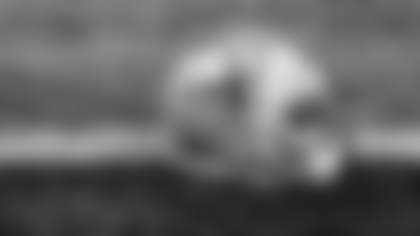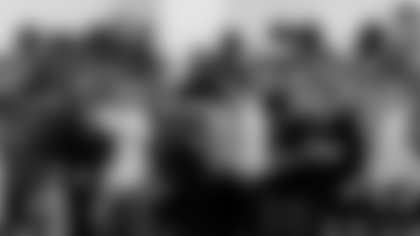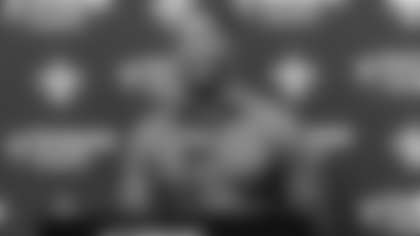Abram Smith admits he has the skills to evade defensive players. He ran for a school single-season record 1,621 yards, with 12 touchdowns, on 257 carries last season as a senior at Baylor, and probably a decent amount of those yards resulted from some level of elusiveness.
But the New Orleans Saints' 5-foot-11, 211-pound undrafted rookie running back would much rather run through faces than around shoulders.
"I was definitely a more punishing runner," he said. "You can kind of see, a lot of times – you can easily avoid contact, but my mom always told me to be the hammer and not the nail.
"I just love imposing my will. Dropping a shoulder on a (defensive back) or a linebacker, it really didn't matter to me. I can make people miss, but I feel more comfortable when I'm running somebody over."
That makes all the sense in the world when factoring in that, the year before, Smith played linebacker at Baylor due to injuries. And he finished with 48 tackles, including five tackles for loss, and a sack in eight games, with four starts.
"I liked hitting people," Smith said, smiling. "I was running down on kickoff and I remember I was smoking dudes on kickoff. There was a better chance to meet another running back in the hole and kind of just impose my will on somebody. I think I'm a physical dude on the field and that's one thing I love to do.
"I think I'm a team player through and through, so any way I could help the team is what I was going to do. Whether that's defense, special teams, offense, it didn't matter to me. I really just wanted to be on the field. I think overall I'm a ballplayer. I like being out on the field, I like being underneath the lights or whatever it might be, out in front of the fans. That's my deal. So it's like, team first and me next."
New Orleans noticed. His willingness to do whatever it took to contribute is what attracted the Saints, who considered selecting Smith on the third day of the NFL Draft, and considered themselves fortunate that he signed on as a free agent rookie.
"Smart, competitive, really good special teams value," Saints Coach Dennis Allen said. "And I think any time you're looking at an undrafted free agent, the first thing you're looking at is, No. 1, how does he make the team and then, No. 2, does he have the ability to be active on game day.
"And for a young player, the best way that you have a chance to be active on game day is to contribute on special teams. That was an area that we felt he was really good at."
Smith, too, understands that his path to a roster spot may hinge on his ability to play special teams.
"I take pride in whatever I'm doing on the field," he said. "You go out there for one play, and it's that one play only, I take pride in that. You can see in a lot of my film on special teams, I'm giving everything I've got. Doesn't matter if it's one play, every single play I step out there I'm going to give it 100 percent.
"Honestly, I feel there's an opportunity here, not only just to play special teams but get on the field as a running back. I feel at home here. When I talked to (running backs) coach (Joel) Thomas, he's one of the first ones to call me. He was one of the first ones to reach out to me, so I kind of felt like he really wanted me here."
Thomas likely saw the running back skills that Smith developed in part because he played linebacker.
"I think overall it was a great transition, considering I was a running back before I was a linebacker," Smith said. "The whole linebacker position helped me see the field a little bit bigger when I'm at running back, so I can see the holes and the gaps that the linebackers and DBs and maybe where the line is supposed to be. So I can kind of see, pre-snap, a little bit of gap integrity, people not holding their gaps, whether or not people are filling it or not.
"I think I came back a better runner. Just being able to see the big field rather than tunnel vision, understanding the defense and coming back and knocking off the rust on the running back skills, I think I became a better runner just from switching over and the whole transition.
"I think the major difference is pre-snap recognition. I can kind of see where everybody is sitting at and I can kind of know what the front might be, and I may make a read before I even get the ball. Or kind of see the hole in which I'm supposed to hit."















